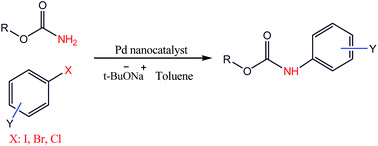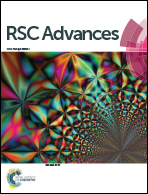Fe3O4@SiO2/Schiff base/Pd complex as an efficient heterogeneous and recyclable nanocatalyst for chemoselective N-arylation of O-alkyl primary carbamates†
Abstract
An efficient, heterogeneous and cost effective method has been developed using an Fe3O4@SiO2/Schiff base/Pd complex as a magnetic and easily recyclable nanocatalyst for rapid and effective N-arylation of carbamates in good to excellent yield. The catalyst can be easily recovered and reused over six runs without significant decrease in the activity. Further highlights of this protocol are operational simplicity, versatility and relatively short reaction times.


 Please wait while we load your content...
Please wait while we load your content...